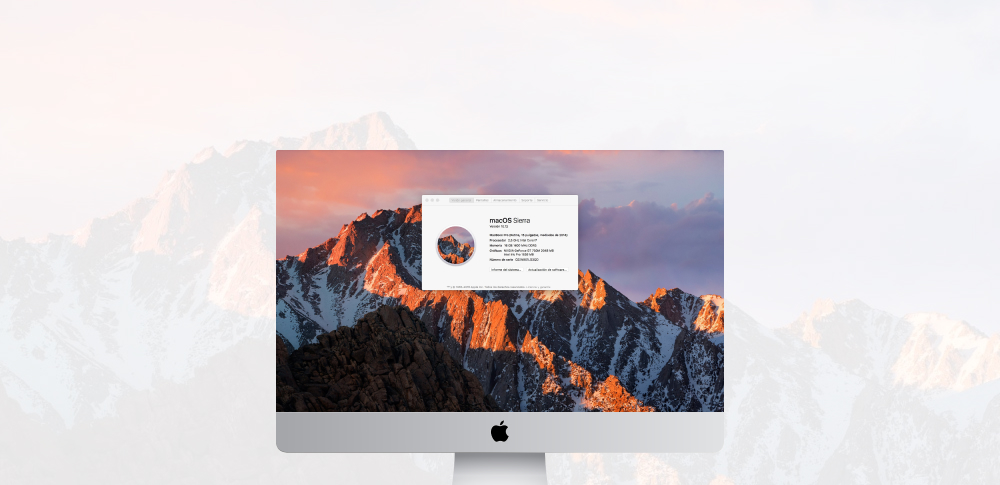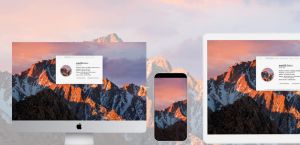 How to fix common macOS Sierra problems
How to fix common macOS Sierra problems
The thirteen operating system created by the Apple company for Mac users was officially launched back in September 2016. Since then, many complaints have been made by Mac users who upgraded their operating systems to the latest macOS. Some of these problems include crashes while installing macOS Sierra, operating system running slowly after installation, programs displaying the "Damaged and can't be opened" error, etc. This guide will teach you how to solve some of these issues so that you can continue using Sierra on your Mac without dealing with errors and slow system performance.
Unresponsive Mac while installing Sierra
Here's what you need to do if your Mac is running slowly, freezing, or crashing while you're installing Sierra:
1. Prior to installing Sierra, uninstall or disable antivirus utilities on your computer.
2. Press the Power button of your computer while holding down the Shift key.
3. Boot into Safe Mode.
4. Install Sierra.
Your Mac won't start after installing Sierra
One solution for this problem is to reset the NVRAM (Non-Volatile Random-Access Memory). This is what you need to do:
1. Restart your computer and hold down the Command+Option+P+R keys.
2. Release the keys after you hear the second startup chime.
Installed programs display the "Damaged and can't be opened" error
This problem was reported by many MacOS users. Whenever they tried to launch an application that was installed prior to upgrading to Sierra, an error message appeared on their screen saying the program in question is damaged. The solution for this issue is very simple: delete the cache data on your Mac.
Damaged App Error
1. Open a Finder screen.
2. Click the "Go" button from the main menu of the application and select the "Go to folder" option.
3. Enter the following line in the text box: "/Library/Caches".
4. Delete all of the files from every folder.
5. Restart your Mac and hold down the Command+Option+P+R keys to reset the NVRAM (Non-Volatile Random-Access Memory).
If the application in question is still loading slow, hold down the Option+Command keys when you click on the program's icon.
iCloud displays errors
iCloud is a default macOS program that helps you keep your data in sync among multiple devices, such as other Macs, smartphones, tablets, and many others. Unfortunately, after upgrading your operating system to Sierra, the popular Cloud service tool might not work as good as it used to. To be more exact, it might display authentication error messages on your screen. To fix this issue, you need to:
1. Launch the System Preferences application on your Mac.
2. Click the "iCloud" button. Select the "Sign Out" option.
3. Restart your Mac, open the System Preferences app again, go to iCloud, and log in to your iCloud account.
Slow Wi-Fi
Even though switching to a cable connection might seem a simpler solution, sometimes it might not be applicable, especially if you're on route or using a public Wi-Fi connection. Here's what you need to do in order to fix this issue:
1. Open a Finder window.
2. Click the "Go" button from the main menu of the application and select the "Go to folder" option.
3. Enter the following lines in the "Go to folder" screen to reveal the files you need to delete: "com.apple.network.identification.plist", "NetworkInterfaces.plist", "com.apple.airport.preferences.plist", "com.apple.wifi.message-tracer.plist", and "preferences.plist".
4. Restart your router, modem, and Mac.
Conclusion
This guide's purpose isn't to scare Mac users from upgrading to the Sierra version. Instead, it provides you with solutions for problems you might encounter while installing or using the aforementioned operating system. Not to mention, there's a chance you might not be dealing with these issues after upgrading your operating system. Sierra provides you with plenty of useful features, and it's definitely a good idea to upgrade your MacOS to get access to the latest software.
Alternative downloads
-
 Mac Informer
free
mac
Mac Informer shows updates for all of your installed applications.
Download
Mac Informer
free
mac
Mac Informer shows updates for all of your installed applications.
Download
-
 Sierra USB
free
mac
Simple app that allows you to quickly create a USB device or a bootable USB support with OS X 10.12 macOS Sierra inside.
Download
Sierra USB
free
mac
Simple app that allows you to quickly create a USB device or a bootable USB support with OS X 10.12 macOS Sierra inside.
Download
-
 macOS Sierra Patcher
free
mac
Free-to-use application for Mac OS that allows you to easily create a modified install...
Download
macOS Sierra Patcher
free
mac
Free-to-use application for Mac OS that allows you to easily create a modified install...
Download
-
 macOS Sierra Software
Update Patch
free
mac
Simple and free-to-use application for Mac OS that allows you to install the latest system updates for macOS Sierra installations.
Download
macOS Sierra Software
Update Patch
free
mac
Simple and free-to-use application for Mac OS that allows you to install the latest system updates for macOS Sierra installations.
Download





Comments
Subscribe to comments